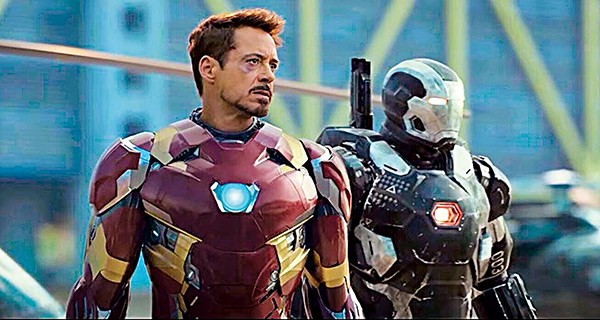The closing credits for The Purge: Election Year roll over the sound of David Bowie’s “I’m Afraid Of Americans”. Rarely has a single song summed up a film so completely.

James DeMarco’s 2013 film The Purge was a simple, $3 million siege film in the tradition of John Carpenter’s pre-Halloween cult hit Assault On Precinct 13. Tellingly, DeMonaco wrote the screenplay for that film’s inferior 2005 reboot. But DeMarco learned a lot from studying Carpenter, and The Purge became a surprise hit. The premise seems simple enough: In the future, America has become a more peaceful and orderly nation, except for one night of the year when, for 12 hours, all laws are suspended. People are encouraged to get in touch with their basest urges and desires to “purge” the bad feeling from their system so everyone can live in an orderly fashion for the rest of the year. While I find it dubious that a total but temporary suspension of law and order would turn normal people into psychotic killers, it’s an effective setup for action mayhem.
It was the followup, 2014’s The Purge: Anarchy, that really showed what DeMarco was capable of. He fleshed out the backstory of the first movie, revealing that the real reason the New Founding Fathers, the reactionary revolutionary group who rule America, instituted the purge system was to get rid of the excess population—meaning poor people. And if the poor didn’t oblige by killing each other, then the New Founding Fathers’ roving militias would give them a hand.

Frank Grillo and Elizabeth Mitchell in The Purge: Election Year.
History has played into DeMarco’s hand, and the rise of pseudofascist presidential candidate Donald Trump renders The Purge: Election Year particularly relevant. Anarchy star Frank Grillo is back as Sgt. Leo Barnes, the cop who learned to stay his hand in his quest for revenge. Now Barnes is the head of the security detail of Hillary Clinton stand-in Senator Ronan (Lost star Elizabeth Mitchell). Ronan is running for president to end the purge system against the transparent tool of the New Founding Fathers, Minister Edwidge Owens (Kyle Secor). With Ronan leading in the polls, the New Founding Fathers conspire to assassinate her under the cover of the annual purge, forcing her and Barnes to flee from a heavily armed, white supremacist militia.
Meanwhile, deli owner Joe (Mydeti Williamson) gets word that his insurance company is hiking his purge premium up so far that he will be forced to defend his business with force. The insurance company wiggling out of its policy agreement at the last minute is one of the many little details that connects the film with the real world. Joe’s major problem is a psychotic shoplifter named Kimmy (played to the hammy hilt by newcomer Brittany Mirable) but once she and her girl gang are dispatched, Joe and his friends give shelter to the fleeing Senator, and their problems quickly get worse.

Brittany Mirable (masked) goes gloriously over the top.
The Purge: Election Year is basically director DeMarco’s love letter to Carpenter’s Escape From New York. At $10 million, it’s the most expensive Purge film yet, but its entire budget is less than half of Harrison Ford’s rumored salary for returning to Star Wars. DeMarco delivers his trademark ultraviolent tableaus featuring creepy masked figures, but now there’s symbolism afoot, such as the group of Russian murder tourists dressed as American presidents, and the guillotine surrounded by headless figures in business suits.
But as I watched Election Year, I couldn’t shake the thought this is the leftist version of Rambo. When the forces of evil are inevitably bested by a combination of shotgun-toting revolutionaries and the ballot box, the film ends with a brief news announcement that pro-Purge forces were rioting, suggesting a sort of left-wing Red Dawn scenario for the next installment to the series’ storyline. Let’s hope DeMonaco’s sequel tease doesn’t cross over into the real world.

